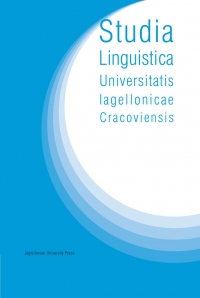Metrical and morphological observations on the use of ἔθηκε(ν) and θῆκε(ν) in the Iliad
Metrical and morphological observations on the use of ἔθηκε(ν) and θῆκε(ν) in the Iliad
Author(s): Filip De DeckerSubject(s): Poetry, Morphology, Syntax, Semantics, Historical Linguistics, Greek Literature
Published by: Wydawnictwo Uniwersytetu Jagiellońskiego
Keywords: augment and injunctive; epic Greek; verbal moprhology; hexameter;
Summary/Abstract: In this article, I analyze the use and absence of the augment in the 3rd singular forms ἔθηκε(ν) and θῆκε(ν) in the Iliad and try to determine the value of the transmitted forms. In doing so I first analyze the forms by checking permitted elisions and by applying metrical laws, bridges and caesurae. The forms that can be analyzed by those criteria are of type A (metrically secure). I then proceed to the forms whose value cannot be established by these metrical criteria and check if an “internal reconstruction” can solve the issue. The method I use is based on Barrett’s metrical and morphological analyses of the augment in Euripides and Taida’s analyses on the augment in the Homeric Hymns. This method analyzes the metrically insecure forms by looking at their position in the verse, the passages in which they appear, and by comparing them to the metrically secure forms in the same paradigm. The forms that can be analyzed by this method are catalogued type B; the forms that cannot are of type C. The forms of type A and type B will be the basis for subsequent syntactic and semantic analyses of the augment use in these forms in the Iliad (elsewhere in this journal).
Journal: Studia Linguistica Universitatis Iagellonicae Cracoviensis
- Issue Year: 137/2020
- Issue No: 1
- Page Range: 67-81
- Page Count: 15
- Language: English

